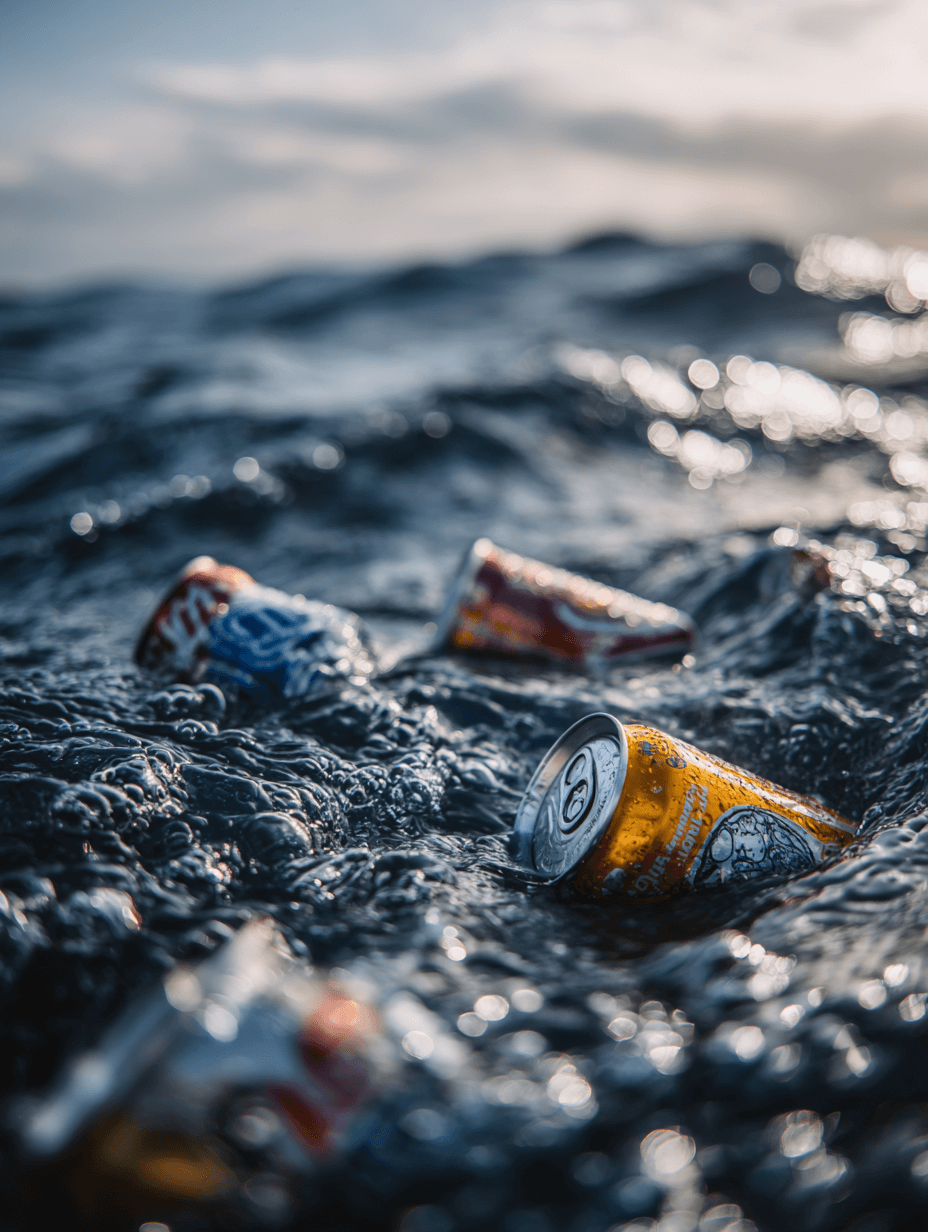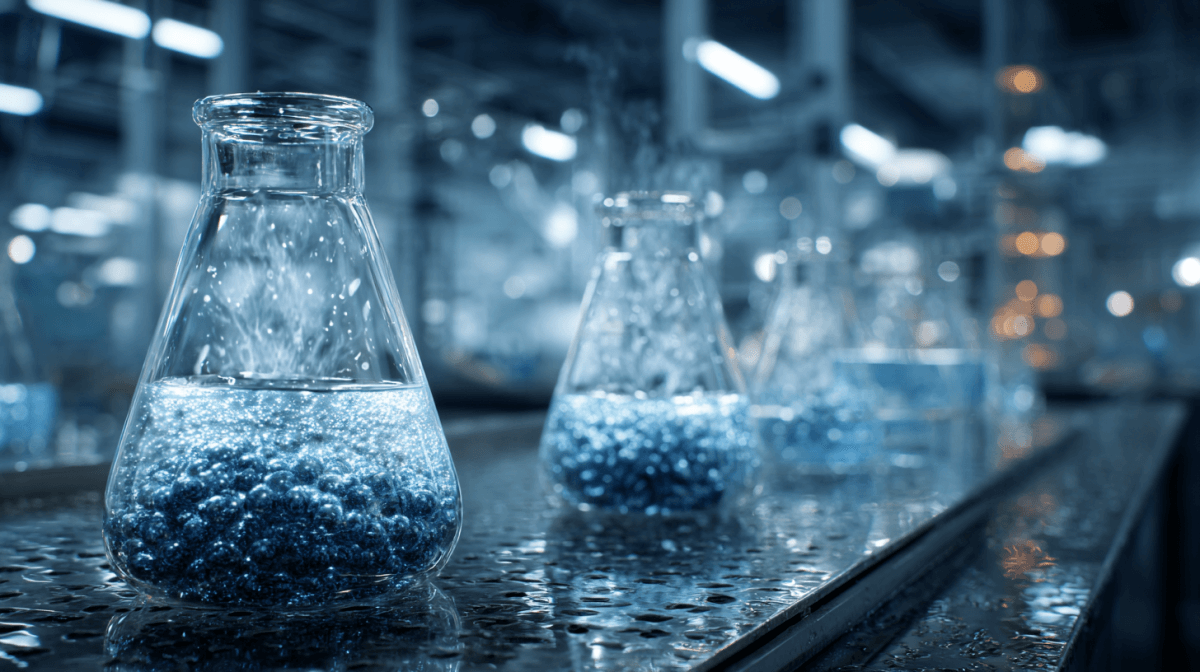
The groundbreaking research, led by Aly Kombargi, a recent PhD graduate from MIT's Department of Mechanical Engineering, centers on a simple but powerful chemical reaction. Pure aluminum naturally reacts with water to produce hydrogen gas, but aluminum exposed to air quickly develops an oxide layer that prevents this reaction from occurring.
The MIT team solved this challenge by treating recycled aluminum with a rare gallium-indium alloy that "effectively scrubs aluminum into its pure form." When these treated aluminum pellets are mixed with seawater, they begin producing pure hydrogen through bubbling reactions.
The process offers remarkable environmental advantages. According to the team's comprehensive life cycle assessment published in Cell Reports Sustainability, "for every kilogram of hydrogen produced, the process would generate 1.45 kilograms of carbon dioxide over its entire life cycle. In comparison, fossil-fuel-based processes emit 11 kilograms of carbon dioxide per kilogram of hydrogen generated."
Scalability and Real-World Applications
The researchers conducted what they call a "cradle-to-grave" life cycle assessment to determine whether their laboratory process could scale to industrial levels. "We're in the ballpark of green hydrogen," Kombargi stated. "This work highlights aluminum's potential as a clean energy source and offers a scalable pathway for low-emission hydrogen deployment in transportation and remote energy systems."
We're in the ballpark of green hydrogen. This work highlights aluminum's potential as a clean energy source and offers a scalable pathway for low-emission hydrogen deployment in transportation and remote energy systems." - Aly Kombargi
The practical applications are extensive. "With a hydrogen fuel cell car using one kilogram of hydrogen, you can go between 60 and 100 kilometers [37 and 62 miles], depending on the efficiency of the fuel cell," Kombargi explained. The production cost of approximately $9 per kilogram makes this method competitive with other green hydrogen technologies.
Infrastructure and Distribution Advantages
One of the most innovative aspects of the MIT approach addresses hydrogen's notorious transportation challenges. Rather than moving volatile hydrogen gas, the researchers propose "delivering aluminum pellets to fuel stations near seawater sources. The pellets would then react with seawater on demand in compact reactors to generate hydrogen for vehicles."
The team has already demonstrated the technology's viability with working prototypes, including "a reactor the size of a water bottle that successfully powered an electric bike for several hours." They've also tested the system on small vehicles and are exploring marine applications for boats and underwater vehicles.
The Caffeine Connection
In an unexpected twist, the researchers discovered that adding caffeine significantly accelerates the hydrogen production process. The team found that "a low concentration of imidazole — an active ingredient in caffeine — is enough to significantly speed up the reaction, producing the same amount of hydrogen in just five minutes, compared to two hours without the added stimulant."
Economic and Environmental Sustainability
The process creates a sustainable cycle where "the salt in the water helped to precipitate gallium-indium, which the team could subsequently recover and reuse to generate more hydrogen, in a cost-saving, sustainable cycle." This recovery mechanism makes the rare metal alloy treatment economically viable for large-scale production.
For maritime applications, the advantages are particularly compelling. "This is very interesting for maritime applications like boats or underwater vehicles because you wouldn't have to carry around seawater — it's readily available," Kombargi noted. "We also don't have to carry a tank of hydrogen. Instead, we would transport aluminum as the 'fuel,' and just add water to produce the hydrogen that we need."
Future Implications
The MIT breakthrough addresses fundamental challenges that have limited hydrogen's adoption as a clean fuel alternative. While hydrogen burns without producing carbon dioxide, most current production methods rely heavily on fossil fuels, undermining its environmental benefits.
"This is very interesting for maritime applications like boats or underwater vehicles because you wouldn't have to carry around seawater — it's readily available. We also don't have to carry a tank of hydrogen. Instead, we would transport aluminum as the 'fuel,' and just add water to produce the hydrogen that we need." - Aly Kombargi
The research team envisions a future where coastal fuel stations could operate compact reactors, producing hydrogen on-demand from transported aluminum pellets and readily available seawater. This distributed production model could eliminate the infrastructure investments and safety concerns associated with transporting and storing hydrogen gas.
"There are a lot of things to consider," Kombargi concluded. "But the process works, which is the most exciting part."
The technology represents a convergence of recycling, renewable energy, and practical engineering that could accelerate the transition to hydrogen-powered transportation while creating new value streams for aluminum waste products.
Sources: MIT News, Cell Reports Sustainability journal, Interesting Engineering, TechXplore, Cell Reports Physical Science, Fuel Cells Works, Thomasnet, and verified research publications from the Massachusetts Institute of Technology.






